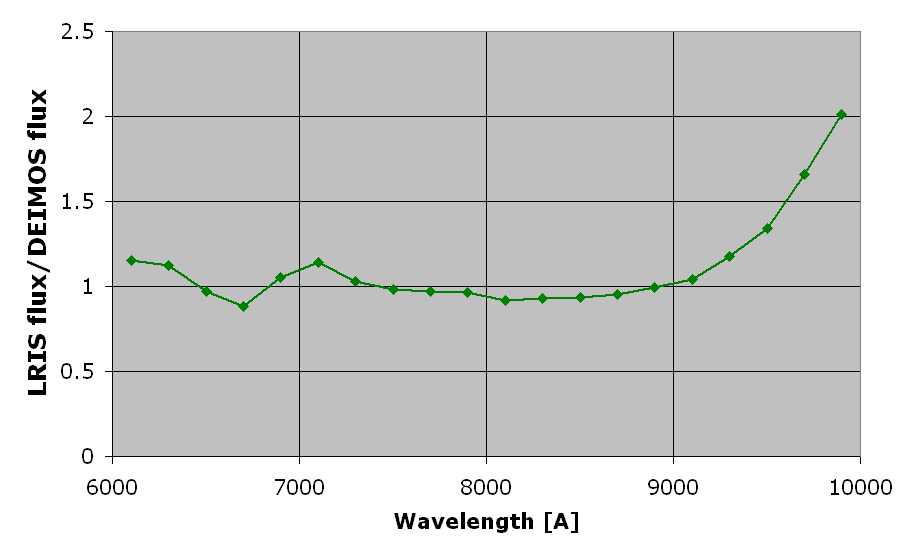Observers who are weighing whether LRIS or DEIMOS would be the optimal instrument for a particular science program may want to know the relative sensitivities of the two instruments at various wavelengths. As part of a program to characterize the relative response of LRIS and DEIMOS, we recently observed the same stardard star (G191B2B) with similar setups: slitless spectroscopy using the 830 l/mm gratings on each instrument. We derived the observed flux (e-/Å/sec) from each spectrometer and computed the ratio of received flux on LRIS to that obtained with DEIMOS; the results appear in the figure below.

As shown in the figure, DEIMOS and LRIS have similar throughput with the 830 l/mm grating for wavelengths below 9000 Å; however, beyond this wavelength LRIS outperforms DEIMOS by increasingly greater margins, and hence programs that require the best sensitivity beyond 9000 Å would benefit from using LRIS. The likely reason for the better performance of LRIS over this range is the outstanding red sensitivity of the new LBNL detectors in LRIS.
Please note that the comparison above is not a perfect test of the instrument throughput:
- Slightly different gratings were used. DEIMOS observations were acquired with the red-optimized, gold-coated 830G grating, whereas the LRIS data come from the aluminum-coated 831/8200 grating, thus giving DEIMOS an advantage.
- DEIMOS and LRIS are on different telescopes. DEIMOS is on Keck II, which has freshly-recoated primary mirror segments, whereas LRIS is on Keck I and is currently using segments with coatings that are several years old. This would also tend to favor DEIMOS over LRIS.
Send questions or comments to:DEIMOS Support